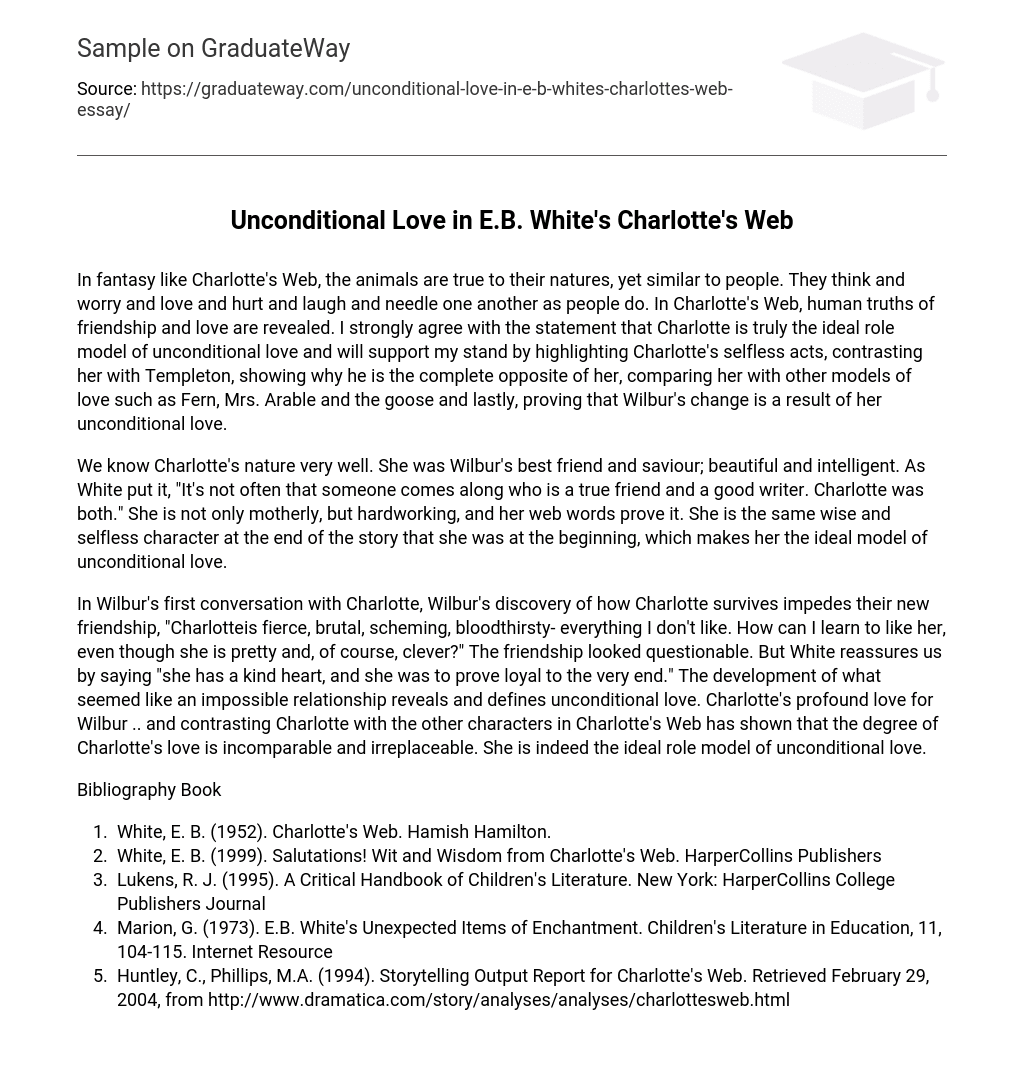In fantasy like Charlotte’s Web, the animals are true to their natures, yet similar to people. They think and worry and love and hurt and laugh and needle one another as people do. In Charlotte’s Web, human truths of friendship and love are revealed. I strongly agree with the statement that Charlotte is truly the ideal role model of unconditional love and will support my stand by highlighting Charlotte’s selfless acts, contrasting her with Templeton, showing why he is the complete opposite of her, comparing her with other models of love such as Fern, Mrs. Arable and the goose and lastly, proving that Wilbur’s change is a result of her unconditional love.
We know Charlotte’s nature very well. She was Wilbur’s best friend and saviour; beautiful and intelligent. As White put it, “It’s not often that someone comes along who is a true friend and a good writer. Charlotte was both.” She is not only motherly, but hardworking, and her web words prove it. She is the same wise and selfless character at the end of the story that she was at the beginning, which makes her the ideal model of unconditional love.
In Wilbur’s first conversation with Charlotte, Wilbur’s discovery of how Charlotte survives impedes their new friendship, “Charlotteis fierce, brutal, scheming, bloodthirsty- everything I don’t like. How can I learn to like her, even though she is pretty and, of course, clever?” The friendship looked questionable. But White reassures us by saying “she has a kind heart, and she was to prove loyal to the very end.” The development of what seemed like an impossible relationship reveals and defines unconditional love. Charlotte’s profound love for Wilbur .. and contrasting Charlotte with the other characters in Charlotte’s Web has shown that the degree of Charlotte’s love is incomparable and irreplaceable. She is indeed the ideal role model of unconditional love.
Bibliography Book
- White, E. B. (1952). Charlotte’s Web. Hamish Hamilton.
- White, E. B. (1999). Salutations! Wit and Wisdom from Charlotte’s Web. HarperCollins Publishers
- Lukens, R. J. (1995). A Critical Handbook of Children’s Literature. New York: HarperCollins College Publishers Journal
- Marion, G. (1973). E.B. White’s Unexpected Items of Enchantment. Children’s Literature in Education, 11, 104-115. Internet Resource
- Huntley, C., Phillips, M.A. (1994). Storytelling Output Report for Charlotte’s Web. Retrieved February 29, 2004, from http://www.dramatica.com/story/analyses/analyses/charlottesweb.html





